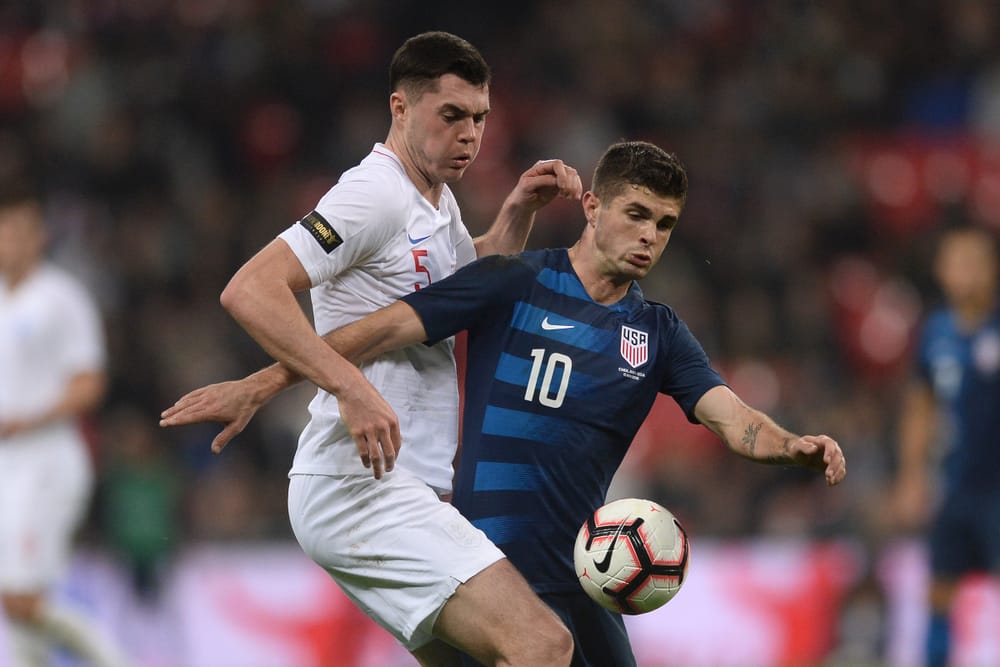Developing a Game Model for Elite Youth Soccer: The Game Model’s Impact on Physical Conditioning
Written By: Michalis Koukliampis (S&C and Technical Coach, Greek Superleague)
In the realm of elite youth soccer, we find a crucible for young talents, where aspirations to become professional footballers are nurtured and cultivated. These elite youth teams, invariably affiliated with professional clubs, serve as veritable breeding grounds for young stars to refine their skills, sculpt their physical prowess, and garner invaluable experience.
In the world of soccer coaching, these early stages are of paramount importance, laying the foundation for promising careers on the grandest of stages.
Within the hallowed halls of professional club youth academies, players are organized into age-specific cohorts, typically spanning from the tender under-9s to the seasoned under-18s or even under-23s.
Each age group is meticulously tailored to cater to the developmental needs of young talents, encompassing the gamut of skill enhancement, tactical acumen, and, crucially, physical conditioning.
This multifaceted approach to coaching comprises a curriculum that addresses technical proficiency (embracing the nuances of passing, shooting, and dribbling), tactical sagacity (mastering positioning and decision-making), physical development (fostering fitness, agility, and strength), and the elusive mental fortitude (nurturing focus, resilience, and teamwork).
Understanding the Game Model in Soccer
In the world of soccer coaching, the term “game model” has emerged as a pivotal concept, steering the course of teams’ strategies and player development. It represents a comprehensive blueprint, a strategic framework that guides a team’s approach to the beautiful game. This game model serves as the cornerstone of tactical planning, offering a structured and systematic way to achieve success on the pitch.
In this coaching magazine, we delve into the intricacies of what exactly the game model in soccer entails and how it influences every aspect of the sport, from team dynamics to individual player performance. Join us on a journey to decode the essence of the game model and uncover its profound impact on the world of soccer coaching.
The Game Model: A Symphony of Excellence on and off the Soccer Field
In the intricate world of soccer coaching, the game model represents more than just a blueprint for play; it is a meticulously orchestrated symphony that harmonizes tactics, strategy, and execution. This fusion of elements forms the backbone of success in elite youth soccer. To empower young players and teams to seamlessly assimilate the game model, we present a comprehensive and in-depth guide that delves into the nuances of its implementation:
1. Clear Communication – The Foundation of Understanding
At the heart of the game model’s successful integration lies clear and concise communication. Coaches must articulate the game model with unwavering clarity, emphasizing its fundamental tenets, distinctive playing style, and overarching objectives.
Players must feel encouraged to participate in an open dialogue, ensuring a profound comprehension of the model’s intricate concepts and their specific roles within it. This clarity is not just a recommendation but a fundamental pillar upon which the entire structure of success rests.
2. Study Tactical Concepts – The Intellectual Pursuit
Youth players embarking on the journey of embracing the game model must engage in an intellectual pursuit of tactical concepts that form its bedrock. This journey involves delving deep into the subtleties of formations, understanding the intricacies of player responsibilities, dissecting defensive strategies, and unravelling the art of attacking patterns.
Akin to scholars immersing themselves in a profound text, young athletes must become students of the game model, absorbing its wisdom and insights.
3. Integrated Training – Bridging the Gap
The synthesis of theory and practice takes shape in the realm of integrated training. Here, youth coaches must infuse elements of the first team’s game model seamlessly into their training sessions. It is not enough to merely mimic the style of play; rather, the training environment should become a microcosm of the principles espoused by the senior squad. This fusion of theory and practice bridges the gap between understanding and execution.
4. Match Analysis – Learning from Experience
The tapestry of understanding and execution extends onto the field of play. Coaches and players alike must engage in the meticulous deconstruction of both youth and first-team matches. Through this process, they uncover the successful execution of the game model or pinpoint areas in need of refinement. Match analysis serves as a powerful educational tool, allowing young players to witness first-hand how the first team’s tactics can be transposed to the youth level.
Section Title
5. Role Model Mentality – Nurturing Aspiration
One of the most potent tools in the arsenal of youth development is the cultivation of a role model mentality. This involves fostering interactions between first-team players and youth prospects. The mentorship dynamic that ensues not only forges unity within the club but also serves as a wellspring of inspiration for young talents. As they witness their senior counterparts in action, they are instilled with the ambition to emulate the standards and achievements of those they look up to.
6. Feedback and Progress Monitoring – The Continuous Evolution
Central to the process of assimilating the game model is the establishment of robust feedback and progress-monitoring mechanisms. These mechanisms provide invaluable insights into how youth players are internalizing and executing the first team’s game model.
Regular feedback sessions become a space for refinement, where individual growth and proficiency are meticulously evaluated in relation to tactical comprehension and execution. It is through this continuous evolution that young talents evolve into the architects of their soccer destinies.
The game model transcends the boundaries of mere play; it is a multifaceted journey that encompasses clear communication, tactical acumen, integrated training, match analysis, role model mentorship, and ongoing feedback. As youth players embark on this transformative odyssey, they not only master the intricacies of soccer but also develop the character and determination required to excel both on and off the field.
The game model becomes not just a tactical framework but a holistic philosophy that shapes future soccer stars and elevates them to the pinnacle of excellence.
Enhancing Physical Conditioning Through Game Model Learning
A holistic approach to game model learning encompasses the integration of fitness training within the tapestry of tactical and technical training. This fusion ensures that players not only grasp the game model’s intricacies but also possess the physical prowess to execute it with finesse. Here’s a detailed strategy:
- Contextual Fitness Training: Craft fitness drills that mirror in-game movements and intensities. For example, if your game model champions high pressing, design drills demanding quick sprints and intense bursts of energy. Infuse fitness elements into game-related scenarios, such as small-sided games, to emphasize specific tactical facets.
- Tactical Conditioning: In fitness sessions, seamlessly merge tactical elements of the game model. Combine fitness exercises with passing and positioning drills to reinforce both physical and tactical understanding. Implement fitness drills directly aligned with executing specific game model strategies, such as swift transitions from defence to attack.
- Position-Specific Fitness: Tailor fitness training to the unique physical demands of different positions. Strikers may focus on explosive speed and finishing, while midfielders require endurance and agility.
- Match Simulations: Embrace fitness-focused match simulations during training. Replicate in-game scenarios, ensuring that players maintain peak physical intensity throughout.
- Interval Training with Tactical Elements: Integrate high-intensity interval training (HIIT) with tactical decision-making. Players engage in quick sprints, immediately followed by decisions regarding passing or positioning.
- Game Model-Focused Circuits: Design circuit training regimens featuring stations aligned with various facets of the game model. Players traverse these stations, executing fitness exercises in conjunction with tactical drills.
- Conditioning at Different Phases: Calibrate fitness training to different phases of the season. Pre-season hones the foundation, mid-season sustains it, and post-season permits recovery and rejuvenation.
- Feedback and Analysis: Leverage data analytics and tracking tools to monitor players’ fitness progress. Offer feedback on how their physical enhancements bolster the effective execution of the game model.
In the grand tapestry of football, whether in its developmental stages or at the zenith of first-team glory, periodization reigns supreme.
Understanding when to infuse the principles and sub-principles of the game model with physical conditioning, all while assessing each player’s readiness to embrace training loads, is the linchpin of success. Personalization emerges as the bedrock for sculpting top-tier athletes, paving the path to unparalleled achievement for every club’s cherished project.
Training Load Management Course
Elevating Performance – The Art of Training Methodology in Soccer
In the ever-evolving landscape of soccer coaching, one of the most critical elements at the heart of success is the training methodology.
It is the compass that guides coaches and players alike on the path to excellence, ensuring that every stride, pass, and goal is a testament to meticulous planning and purposeful execution.
Training methodology in soccer represents a systematic approach to preparing players physically, tactically, mentally, and technically for the challenges of the beautiful game. It is the strategic blueprint that transcends the confines of the training ground, shaping a team’s identity, and unlocking its full potential on the pitch.
The Foundations of Soccer Training Methodology
At its core, soccer training methodology is built upon a deep understanding of the sport’s multifaceted nature. Soccer is not merely a game of kicks and goals; it’s a complex interplay of physical fitness, tactical intelligence, technical proficiency, and mental resilience. Training methodology seeks to harmonize these elements, sculpting players into well-rounded athletes who can navigate the demands of a match with grace and precision.
Physical Fitness
In the realm of soccer, physical fitness is the bedrock upon which all other attributes are built. A robust training methodology focuses on enhancing players’ endurance, strength, agility, speed, and flexibility. It’s about ensuring that athletes can go the extra mile, sprint that crucial yard, and leap higher than their opponents. Conditioning drills, interval training, and periodization techniques are just some of the tools in a coach’s arsenal to forge physically resilient players.
Tactical Intelligence
Soccer is often likened to a game of chess, where every move is a calculated decision. Training methodology places a premium on tactical intelligence – the ability to read the game, anticipate opponents’ actions, and execute well-thought-out strategies. Players are immersed in scenarios that mirror real match situations, encouraging them to make split-second decisions, adapt to changing circumstances, and exploit weaknesses in the opposition’s formation. Tactical drills, team shape exercises, and game model assimilation all play vital roles in honing this aspect of a player’s skillset.
Technical Proficiency
In the hands (or rather, at the feet) of soccer players lies an instrument of precision – the ball. Technical proficiency forms a cornerstone of training methodology, emphasizing players’ ability to control, pass, shoot, and dribble with finesse. Training sessions are dedicated to mastering ball-handling skills, ensuring that players become maestros in orchestrating their moves on the pitch. Ball drills, skill challenges, and personalized coaching are integral to this facet of development.
Mental Resilience
Soccer is as much a mental battle as it is a physical one. Training methodology recognizes the importance of mental resilience – the ability to stay focused, stay calm under pressure, and bounce back from setbacks. Coaches employ psychological techniques, visualization exercises, and mindfulness training to fortify players’ mental fortitude. The result? Athletes who approach every game with a winning mindset, unshaken by adversity.
Individual Development within a Team Context
While training methodology nurtures individual growth, it does so within the context of a cohesive team. Soccer is, after all, a team sport, and the success of the collective often hinges on how well individual talents can complement each other. Training methodology emphasizes both individual excellence and team cohesion, ensuring that players not only shine individually but also gel seamlessly with their teammates.
The Endless Evolution of Soccer Training Methodology
In the ever-changing world of soccer, training methodology is a dynamic entity that continuously evolves. New insights, technologies, and innovations reshape the way players are prepared for the game.
In this coaching magazine, we will explore the cutting-edge trends and emerging best practices that are pushing the boundaries of training methodology, from data analytics and sports science to personalized training regimens.
What Next?
🌟 Physical Training and Soccer Methodology Course 🌟 🚀
Are you ready to take your soccer coaching and performance staff skills to the next level? Look no further! The International Soccer Science & Performance Federation (ISSPF) presents its ground-breaking online course:
📚 Unlock the secrets to success as a coach
📚 Discover the cutting-edge strategies and methodologies used by elite soccer coaches and performance staff worldwide.
Whether you’re a seasoned coach or just starting your career, ISSPF’s course offers invaluable insights and hands-on training that will transform your approach to soccer coaching.
🔥 Course Highlights 🔥
✅ Comprehensive Curriculum: Dive deep into physical training principles, soccer-specific methodology, and tactical analysis.
✅ Expert Instructors: Learn from top-tier professionals and gain real-world knowledge.
✅ Flexible Learning: Access the course from anywhere, anytime, at your own pace.
✅ Interactive Modules: Engaging videos, quizzes, and practical exercises to reinforce your learning.
✅ Networking Opportunities: Connect with a global community of coaches and performance staff.
✅ ISSPF Certification: Showcase your expertise and enhance your career prospects.
💡 Why Choose ISSPF? 💡
ISSPF is a trusted authority in soccer coaching and performance. With a track record of excellence, we equip our students with the skills and knowledge needed to excel in the competitive world of soccer.
👉 Ready to Ignite Your Coaching Career? Enrol Now! 👈
🌐 Visit Our Website 🌐
Explore the course details and secure your spot today at ISSPF Physical Training and Soccer Methodology Course.
📣 Don’t miss this chance to join the ranks of successful coaches and performance staff who have transformed their careers with ISSPF! Enrol now and lead your team to victory with confidence. ⚽🏆
Share this article:













